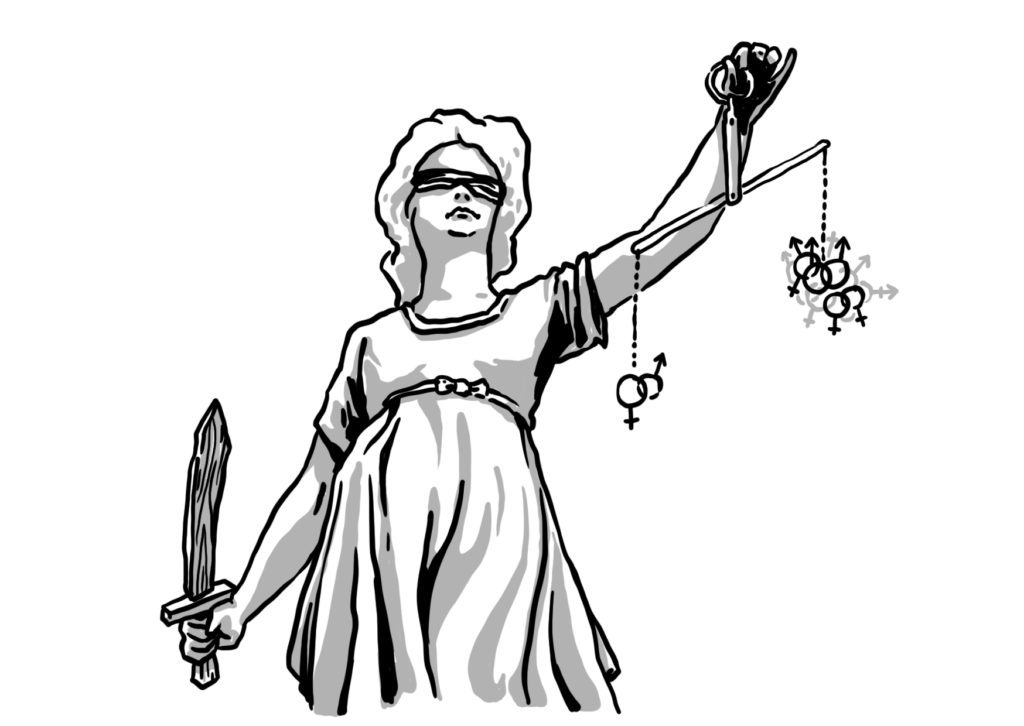Sexual assault continues to be a prevalent problem in Western Society as seen both on University campuses from Australia, to Europe, and the US but also on a wider more deeply ingrained cultural level. Recently, members of the Hertie Community have been directly impacted. To move forward and combat harassment, a better understanding of what constitutes sexual harassment and violence needs to be conveyed to the public along with the creation of a public dialogue
The definition for sexual violence is a broad one. According to the Center for Disease Control, definition, sexual violence encompasses a large range of topics, from “complete or attempted forced acts” to “unwanted sexual contact.”
Sexual harassment and sexual assault is an ongoing problem on campuses around the globe. A survey done earlier this year in the United Kingdom interviewed 4500 students from 153 universities to ask about their experiences with sexual misconduct. Of those interviewed, 62 percent had experienced some sort of unwanted sexual act or activity. The most common place for these experiences was residence halls (28 percent) social events (24 percent) and university social spaces such as bars and shops (23 percent). In over half of the cases the perpetrator was known to the student, and most frequently the perpetrator was another student from the university (75 percent). 70 percent of the women interviewed had experienced some form of sexual violence, where 8% of the women interviewed had been raped.
The results from the UK are unfortunately not the exception, rather the rule. Statistics on sexual violence on US campuses found that approximately 1 in 5 females and 1 in 20 males are victimised. Overall, nearly two thirds of US college students report sexual harassment. In 2016 alone, a finding with 30000 university students stated that 51 percent were sexually harassed in, with 26 percent harassed at their university.
The information produced from these two countries show a rather alarming prevalence of some sort of sexual harassment occurring. Yet, in both the UK and US, reporting on the incidences is almost non-existent. Approximately 10 percent of those harassed and assaulted reported the incidences to their university or the police. In Australia this number was even lower, 94 percent of those harassed and 87 percent of those assaulted did not make a formal complaint.
Why don’t students think they can report?
One student remarked
“…I had the emotional strength to do one of two things: I could pursue a complaint against my rapist, or I could finish my degree.”
While another said
“My university failed me entirely when I reported my sexual assault, and it was brushed under the carpet. I didn’t bother reporting the second incident.”
Social norms tend to support sexual violence. A 2010 study of students at a northeastern university in the US either agreed or strongly agreed with “If a girl acts like a slut, she is eventually going to get in trouble.”
Students who responded to the Australian survey gave a few answers as to why they did not report; fear that the university would not believe them, that the situation was not serious enough, worry the report would not be kept confidential, or the belief that the university would not take action to name a few.
These reasons indicate a lack of trust in university procedures and practice, but there are more reasons why students, or victims in general, feel they can’t report. Victims of sexual violence often express feelings of shame or humiliation. Others may deny the treatment they endured to actually have been abusive and downplay the incident. Some even fear the social repercussions that can accompany reporting – losing credibility, being branded a troublemaker, etc. Many victims do not know what constitutes sexual harassment, how it affects them, or what the effects on their person are for not reporting it.
To encourage reporting, the 2012 German Police Crime Statistics comment on sexual abuse in societal institutions, acknowledging that it has increasingly become a focus of public attention. The federal and state governments have initiated a series of measures to deal with the problem, support the victims of abuse and improve protection against sexual violence. In March 2013, the campaign “Missbrauch verhindern” (Preventing Abuse) was launched, aimed at parents and caregivers of children and adolescents. It is estimated that 7 percent of German women face sexual violence not committed by their partners. However, police statistics in Germany only register the recorded crime – i.e. those that have been reported and finalised by the police.
In 2016, a new law was passed by the German parliament on sexual assault and rape. This changed the law to a model of “no-means-no,” changing the definition of the previous law, which had required that the victim was coerced into performing an act against their will. Descriptions of two new offenses were added – sexual harassment and offenses done by or in groups.
What happens when they do report?
By 2015, 97 percent of US institutions of higher education had developed Title IX (a policy passed in 1972 for institutions to use in guidance for investigation and resolution of sexual harassment of students) policies, but only 61 percent reported implementing primary prevention programmes. An analysis of 75 (US) colleges and universities found that only 17 percent had a link to their Title IX resources on the homepage of their website.
Echoes of concerns can be seen in the recent sexual harassment case at the Hertie School of Governance. An email provided to students stated that the board convened had found violations of Hertie’s Code of Conduct, which includes a reference to the aforementioned German law that must be signed by all students upon enrolment. One student directly impacted by the situation shared her frustrations, especially given the violation of the code, commenting on the lack of transparency with the university’s procedures and decision making process. She expressed that the information shared with the student body was both sparse and vague in its delivery. By not sharing more information, she observed an environment of judgment and mistrust among the student body. She felt unsatisfied with the outcome of Hertie’s proceedings. As a result of the opaque nature concerning the University’s avenues to report any such offenses, she worries that students will not have the confidence needed to come forward in the future.
A quick search of the Hertie website does not show information on procedures for sexual assault or sexual harassment – searching for either of these terms yielded no results. An attempt to ‘Google’ the answers was met with nothing as well. The “Support along the way” section of the university’s website only lists information for incoming students. After further investigation, being redirected to Moodle (the university’s academic platform) and finally finding the “Hertie School Policies and Regulations” section, the link to the university’s Code of Conduct appeared to be broken, resulting in an error message. A brief message about concerns of “potential discriminations on the bases of age, …gender identity & expression …[and] sexual orientation” directs students to the school’s Diversity Ombudsperson or Student Affairs team. No further information could be found.
In response to the recent events, the university has promised to raise awareness about sexual harassment and has plans to clarify statutes where appropriate.
What needs to be done?
There are clear reasons to encourage students to report incidents of sexual violence – it ensures their safety, improves long term physical and mental health, and helps gather information and data to improve services and prevention. Universities must strive to create user friendly reporting mechanisms, adopt disciplinary procedures and sanctions, have proper student resources (such as psychological, medical, and academic), and developed prevention strategies.
To have genuine student input is the best way to move forward. As one of the groups most affected, students need to have true input in the design, implementation, and revision of strategies that reduce university sexual assault and harassment. These decisions help validate students’ experiences and contributions, and guide universities towards a more proactive position, rather than a reactive approach.
There are recommendations for students (and individuals in general) that, in theory, could make themselves safer. Such ideas often include walking in groups or avoiding isolation, carrying tools such as pepper spray, or taking self-defense classes. And while these all may be useful, they do not address the deeply rooted societal norms. Until there is a deep paradigm shift in which both men and women alike are raised to understand that sexual violence is not acceptable and can never tolerated under any circumstances, it will continue to play a role in our society.

Madison Wilson is a class on 2019 Master of International Affairs candidate at the Hertie School of Governance. She graduated from Augustana University in Sioux Falls, South Dakota (USA) with a BA in Government and International Affairs, International Studies, and German. She’s passionate in the study of international law and social change. When not studying, she likes to curl up with a good book and a cup of Earl Grey.
